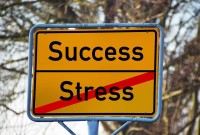- Home
- Business Processes
- Industry Knowledge
- Aerospace Industry
- Automotive Industry
- Banking Domain
- BFSI Industry
- Consumer/ FMCG Industry
- Chemicals Industry
- Engineering & Construction
- Energy Industry
- Education Domain
- Finance Domain
- Hospitality Domain
- Healthcare Industry
- Insurance Domain
- Retail Industry
- Travel and Tourism Domain
- Telecom Industry
- Leadership Skills
- eLearning
- Home
- Leadership
- Change Management
- Types of Business Change
Types of Business Change
Change is a complex phenomenon. There are different types of changes that are going on around us. Listed in this article are twelve areas in which change arises and bring some classification to it. However one may classify the change, the various heading is always interrelated. The change could be triggered by market changes, technological changes, or organizational changes.
There are several models of organizational change. A model is an integrated way of explaining why and how change takes place, based on a known and acceptable basic explanation (theory) of relationships of several aspects involved. It would be obvious that there can be different ways of explaining the change, depending on what theory we follow or use.
1. Trickle-Down Model
Two contrasting models of change are the "trickle-down" model vs. "identity search" model. In the trickle-down models of change, the change is driven by the elite group. The organizational change occurs because the top management takes a decision and adopts some new ways (technology, systems, structure, etc.) and others follow it.
2. Identity Search Model
According to the Identify Search Model, the urge to develop one's own uniqueness and identity will make the group or individuals accept change.
3. Internal Change
Another way is to look at change is to look for the external or internal forces as determinants of changes. Change can be a result of internal factors like changes in the direction and objectives and ideology of a company or a workforce.
4. External Change
The changes, which occur within the business, can result from external environments such as the development of technology, globalization of markets, or new competitors on the market.
5. Adaptation Model
Business models change as managers engage in more mundane adaptation in response to external changes. The adaptation model emphasizes the role of external factors (for example a new government policy, or competitive environment) in producing a change in organizations (more emphasis on quality, restructuring, etc.). To respond positively to environmental changes, the person must adapt.
6. Proactive Model of Change
According to the proactive model, the explanation comes from within the organization (the decision of the organization to set an example, to be a leader, to anticipate the future) and act and change itself in response to such an internal urge. Companies that take a proactive approach to change are often trying to avoid a potential future threat or to capitalize on a potential future opportunity. Corrective action was being taken before a market decline or before technology became obsolete. Positive action was being taken to seize competitive advantage before someone else did.
7. Structural Model of Change
Yet another explanation of organizational change may lie in the emphasis on the structure or the process. Structural change refers to a dramatic shift in the way a country, industry, or market operates. Successful change, according to the structure model, would require preparing the necessary structural details (technology, design of the organization, systems), and introduce them systematically.
8. Process Model of Change
The process of change entails creating the perception that a change is needed, then moving toward the new, desired level of behavior and, finally, solidifying that new behavior as the norm. People will also change, according to the process model, successful change can be planned by helping people to develop process competencies (ways of planning, decision-making, problem-solving, collaborating, communicating, etc.), and then people will find new ways of organizing, etc.
9. Adaptive Change
Adaptive change requires new learning for problem definition and solution implementation. Adaptive change requires auditing of existing systems, roles, and responsibilities. This process can often result in essentially rebuilding the entire company by redefining job descriptions, consolidation, elimination of overlap, and creating greater efficiencies. This involves the reimplementation of a change in the same organizational unit. Adaptive change is not considered threatening.
10. Innovative Change
An organization needs to constantly innovate to succeed. Innovation is about making things better, faster, or cheaper. Dynamically continuous innovation affects the way in which the company adapts to changing market conditions. This involves changes that are generally new and unfamiliar. The innovative changes create a kind of uncertainty and fear in organizations.
11. Radically Innovative Change
Radical innovation is an invention that destroys or supplants an existing business model. Radical innovation is the long-term growth strategy for revolutionary business transformation. The concept of radical innovation is about leveraging core competencies for the future and this is the most intimidating type of change. This type of change is most resisted in organizations. Radical innovation creates such a dramatic change in processes, products, or services that they transform existing markets or industries, or create new ones. Implementation of a radical change in an organization requires a long-term strategy.
12. Reactive Change
This is a change brought about by a sudden or unplanned event. Whereas the planned change is a systematic, deliberate change in the way part or all of an organization functions. In planned change the focus is on processes, people, or technology; and one person, a project team, a department, or the entire firm can be involved in the change process.
Related Links
You May Also Like
-
Communication has as its central objective the transmission of meaning. The process of communication is successful only when the receiver understands an idea as the sender intended it. How does a message or an idea travel from one person to another? To transmit our message, we engage in a sensitive and complex process of communication, with different elements like sender, message, channels, receiver, noise, and feedback.
-
Generating Ideas using Brainstorming
The brainstorming technique was developed by Alex F. Osborn in 1957 and brainstorming means where a team of members generates a large amount of alternative fruitful ideas on a specific problem without any criticism and then evaluates each idea in terms of their pros and cons. Brainstorming techniques fall into four broad categories: visioning, exploring, modifying, and experimenting.
-
Storming Stage of Team Development
Storming is the second stage of team development and this stage is characterized by a bid for power and inter-personal conflicts. Learn the key factors that occur in the storming stage and the strategies that a team leader can adopt to pass this stage of high winds
-
Collaborative leadership is all about collaborative problem-solving and decision-making or can also be defined as the leadership of a collaborative effort. . The term started to appear in the mid-1990s in response to the formation of long term public-private partnerships to rebuild public infrastructure. Learn how you can use principles of collaborative leadership to enhance your leadership skills for being an effective leader.
-
As we know change is inevitable as market expectations are not static, new technology is constantly being developed, and organizational responses are inevitable to these sequences. It is a simple matter of business evolution. If every manager and every employee could have some understanding of the triggers of change and their relationships with each other, then the acceptance to change would be easier.
-
Time management is the process of planning and exercising conscious control of time spent on specific activities, especially to increase effectiveness, efficiency, and productivity. The best time management techniques improve the ways you work. Time management refers to managing time effectively so that the right time is allocated to the right activity. Learn more about the five steps for effective time management viz. study, identify, analyze, decide, and implement.
-
Team Development by Building Trust
As your team begins to work together, you need to establish a way each team member can exchange ideas and build mutual trust. Successful groups are built on trust and collaboration. A free exchange of ideas, in an open environment, will allow your team to get to know each other and enable you to check on how they work together. Learn some tips to help build team trust and establish personal bonds.
-
Stress is a product of the busyness of modern life. It has assumed grave dimensions ever since the emergence of industrialism. In fact, stress is a natural, ongoing, dynamic, and interactive process that takes place as people adjust to their environment. Stress can be brought about by positive or negative life events. Distress can cause disease and eustress or positive stress can promote wellbeing and increased productivity. Learn to recognize and be responsible for your stress, and learn the ways to manage stress.
-
Change is a complex phenomenon. There are different types of changes that are going on around us. Listed in this article are twelve areas in which change arises and bring some classification to it. However one may classify the change, the various heading is always interrelated. The change could be triggered by market changes, technological changes, or organizational changes.
-
Thinking & Problem Solving Skills
Today's dynamic business world demands that you make decisions that significantly boost productivity and drive competitive advantage. But how do you know whether a decision will benefit the organization? And how do you know that the decisions are based on rational and statistical reasoning? Explore how to become a dynamic problem solver with the skills to make accurate decisions.
Explore Our Free Training Articles or
Sign Up to Start With Our eLearning Courses

About Us
Learning
© 2023 TechnoFunc, All Rights Reserved










